Today’s blog is written by Laura Markmann, PTA, ATRI and Licensed Black Belt Nia teacher. She has ran the Aquatic Therapy program at Rockwood South Hill since September 2011, two days a week under the supervision of a licensed PT.
____________________________________________________________________________________________________________

Image from Aquatic Therapy & Rehab Institute
Aquatic Therapy (AT) consists of an exercise program that is performed in the water. It is a beneficial form of therapy that is useful for a variety of medical conditions by using the physical properties of water to assist in healing and exercise performance. At Rockwood South Hill in Spokane, Aquatic Therapy is an integrated and tailored exercise program that guides residents through a combined aquatic and land therapy program.
How does it Work?
One benefit of AT is the buoyancy provided by the water. While submerged in the water, buoyancy assists in supporting body weight. This decreases the amount of weight-bearing which reduces the force of stress placed on the joints. This is very important to our residents with arthritis, fractures, or who are overweight. The viscosity of water provides an excellent source of resistance that can be easily incorporated into an AT program. What is really great is the resistance allows muscle strengthening without the need of weights. Using resistance coupled with the water’s buoyancy allows a person to strengthen muscles groups with decreased joint stiffness that cannot be experienced on land. Our program also includes hip and back rehab and a very rigorous core stabilization program. Eighty-percent of these problems come from muscle imbalance. Our job is to provide minimal load to damaged tissue while incorporating a bit of challenge!
AT goals are written to directly relate to functional skills necessary for quality of life. The goals address areas such as improved leg strength to facilitate weight bearing during transfers or LE dressing, improved arm & leg flexibility, improved grasp and release and eye-hand coordination, increased relaxation to allow for better positioning while sitting, and increased physical activity tolerance to continue with community-based activities and exercise.
AT also utilizes hydrostatic pressure to decrease swelling and improve joint position awareness. The hydrostatic pressure produces force perpendicular to the body’s surface. This pressure provides joint positional awareness to the resident, which also improves proprioception. This especially assists residents who have had joint sprains with ligament tears. Lastly, the warmth of the water (90-94 degrees) assists in relaxing muscles and vasodilates vessels increasing blood flow to injured areas. People with muscles spasms, back pain and fibromyalgia find this aspect of Aquatic Therapy especially therapeutic.
Aquatic Therapy at Rockwood South Hill
At Rockwood South Hill we have a private pool for residents with a lift purchased in 2011. Laura Markmann, PTA, ATRI, and Licensed Black Belt Nia Teacher, runs the program two days a week under the supervision of a licensed PT.
Since our program began in 2011 we have successfully graduated five residents with diagnoses ranging from CVA with left foot drop to chronic back pain, sciatica, lumbago ( low back pain), Osteoarthrosis-generalized multiple sites, chronic pain, degenerative joint disease, rotator cuff repair and lateral peripheral neuropathy. A current resident just began AT with bilateral AFO’s due to a crushing accident and is ambulating in the pool with a Bobath wrap on her bilateral lower extremities.
It is important to know however, that Aquatic Therapy is not for everyone. Certain conditions and diagnoses are not appropriate for pool therapy. These include: cardiac conditions, fevers, open wounds, infections, and bowel/bladder incontinence. We always request Aquatic Therapy as a therapy modality that is specifically ordered by a medical provider.
There are challenges to running any specialized program. Our time is valuable and we had to be creative in finding ways to make the time to develop the protocols, and work with the retirement community on schedules, transportation, rules & regulations. The community has been very supportive and agreed to purchase several pieces of specialized equipment and exercise software. Our program is now a valuable part of the marketing materials and has drawn the attention of healthcare providers in the community.





